Technical-use rope is a lifeline for firefighters and other rescue personnel, making selection and purchase key decision points
Rope is among the most versatile pieces of equipment in rescue operations and fire protection. Life safety rope is carried by firefighters, routinely transported in emergency rescue vehicles, and housed in fire stations across the United States.
Climbers, search and rescue teams, mariners, and trade specialties (e.g. construction) use rope routinely in daily work and recreation, while firefighters employ rope for escape, in addition to the hauling and rigging that accompanies rescue operations. Like any universally loved and needed tool, rope has the capacity to fulfill multiple functions.
Broadly speaking, life safety rope for firefighters is split into two subcategories: technical-use rope or general-use rope. National Fire Protection Association (NFPA) recommendations guide the proper selection and purchase of both types of life safety rope—and this piece focuses on the selection criteria for technical-use rope.
In this first installment of our two-part series on selecting life safety rope, we examine the differences between technical-use and general-use life safety rope and help firefighters determine which one they need for their operations. We also review three of the most important characteristics firefighters should consider when selecting rope: material, construction, and minimum breaking strength.
Ready to start shopping? Be sure to view our selection of rope, including our technical-use life safety rope, Bulwark Safety X, and the glow-in-the-dark Night Saver, which illuminates the path to safety in marine rescues, firefighting, and other applications.
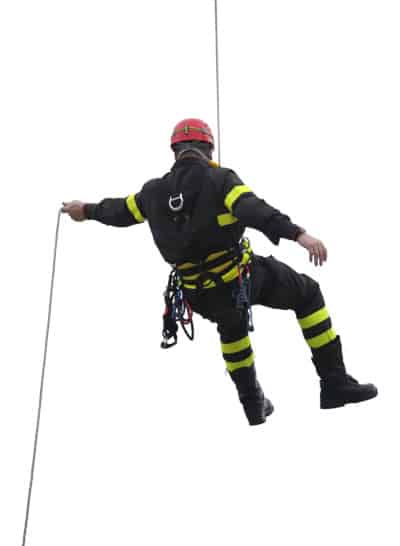
Life safety rope for technical and general use
All life safety rope must meet specific physical standards and characteristics as defined by NFPA. The 2018 edition of NFPA 1858: Standard on Selection, Care, and Maintenance of Life Safety Rope and Equipment for Emergency Services is the primary document that details rope selection and care. It emphasizes the context for how rope is used over its lifespan, covering its life cycle from birth (selection and purchase) to death (retirement).
When combined with the 2017 edition of NFPA 1983: Standard on Life Safety Rope and Equipment for Emergency Services, the characteristics of life safety rope are fully explained.
Firefighters and other rescuers must consider the limitations and range of uses when selecting rope, as recommended by NFPA. The umbrella term “life safety rope” encompasses technical-use and general-use rope, yet both types have extremely high safety ratings in all critical dimensions (loads, falls, etc.). How, then, do firefighters distinguish between technical- or general-use rope?
NFPA 1858 (A.5.1.2) offers a straightforward explanation for deciding whether technical-use rope is appropriate. Seven general factors are listed for evaluating training levels and situations that are necessary to work with it:
From the 2018 edition of NFPA 1858
5.1.2 The organization shall refer to its risk and hazard assessment of the response area to determine the types of incidents requiring life safety rope and equipment that could be encountered, including but not limited to the following:
(1) *Type of technical rescue incidents likely to occur in the response area
(2) Type of technical rescue incidents to which the organization plans to respond
(3) Frequency of each of these types of incidents
(4) Level of operational capability that the organization intends to maintain for each type of technical rescue incident — awareness, operational, technician — in accordance with NFPA 1670
(5) Maximizing response capabilities through cooperation with other response organizations, departments, or agencies
(6) *The organization’s established acceptable safety factors for technical rescue operations
(7) *Geographic location and conditions
The heaviest loads require general-use rope, while technical-use rope is sufficient for relatively lighter loads—although the lighter weight of the latter is often preferred by rescuers with more advanced and specialized jobs, who’ve received training for complicated rescues. Such professionals have the know-how and experience to maintain safety despite using a rope that isn’t as strong as general-use rope.
From the 2017 edition of NFPA 1983
A.3.3.71 This choice should be based on the levels of operational capability of the organization [. . . .] For example, an organization at the operational level performing simple rescues might require the higher margin of safety offered by general-use equipment. The highly trained or specialized organization performing the more complicated rescue might benefit from the lighter weight of technical-use equipment, but due to their level of training can maintain an acceptable level of safety and efficiency for the specified operation.
Because general-use rope has superior capacity to meet any unknown condition in the field, it is heavier and thicker—and therefore could be overkill in some instances. For example, cave rescue operations might benefit from technical-use rope to avoid hauling a heavier rope to the cave and throughout the cave system, especially since such a rescue can use hundreds of feet of rope.
Since these differences are subtle, it is helpful to understand the context of modern safety ropes, and how they have evolved to meet such high safety standards.
Twists and turns in rope technology
Rope has been crafted since the dawn of civilization, fashioned by twisting or braiding fiber into strands. Natural fibers like hemp and cotton can create strong and durable ropes, but they require more braiding and material. This results in a thick, wide, heavy rope. Suspension bridges, for example, can withstand years of use and high loads. The downsides of natural rope fibers, however, become readily apparent when compared with nylon and even polyester.

Synthetic materials have longer, more consistent strands, so they produce stronger rope using less material. Nylon, the preferred rope material, is also resistant to chemicals, heat, and moisture—thus improving its ability to withstand exposure to a wide range of environments.
Early, hand-crafted rope manufacturing created three strand or eight-strand ropes by braiding natural fibers into bundles. This same fundamental design and construction processes persist, but with a few literal twists: simple three-strand rope can be strong, but its geometry causes twisting and spinning. When eight-strand rope arrived, climbers, cavers and rescue workers embraced it. One reason: spinning on a rope can quickly lead to disorientation and nausea.
The eight-strand structure is also pliable and runs easily through most rigging setups, such as carabiners and figure-eight descending devices. Carabiners are used to link ropes to one another, and any rope that is too bulky or too stiff can be difficult to attach or detach quickly. The figure-eight rappel device relies on friction: the right rope must wrap around and through its two loops easily.
Kernmantle is the gold standard for modern rope construction, as it combines an inner, braided core with an outer sheath. This style beats out the rest in rescue operations, including firefighting. Most high-quality rope on the market today uses kernmantle construction with nylon and polyester materials.
Ropes to the rescue
Among specialized ropes, Annex A of NFPA 1858 (A.3.3.37.3) offers this definition:
The term life safety rope generally refers to any rope that is used specifically for the purpose of suspending or protecting human life.
In some cases, as noted in A.5.1.2(1), rescue conditions may require rope that meets standards for specific uses. Low-angle or over-the-bank, water and swift water, and subterranean rescues can benefit from life safety ropes that, respectively:
- Include abrasion-resistant qualities
- Float, with low gravity (such as polyester or polyolefins) materials
- Are ideal for hauling over edges, such as static rope with minimal elongation
Synthetic rope material allows rope manufacturers the ability to design rope that includes all the aforementioned characteristics in a single product. In addition, construction methods have created life safety ropes with slimmer profiles, including technical-use versions, that make them easier to carry over long distances.
But before moving on to how the NFPA delineates rope characteristics, such as diameter, load, minimum breaking strength (MBS) and heat resistance, the concept of elongation—which further distinguishes life safety rope into two subcategories—should be understood.
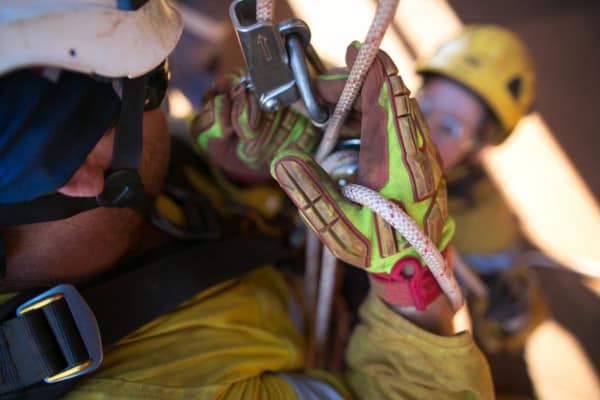
Static versus dynamic rope
Firefighters typically use what is termed “static” rope because the possibility of free-hanging ascent, litter rescue, or descent demands it. Rock climbers, conversely, use rope with more bounce to protect in a fall: a climber needs a cushion, or rebound effect, to mitigate a fall on rope. A “free-hang” means the entire body weight is supported by the rope, whether the climber is ascending or descending.
This “dynamic” property of climbing rope, however, makes it harder to climb up the rope itself, especially if free-hanging. Dynamic rope also performs poorly when rigged over multiple edges, which is part and parcel of rescue operations.
Thus, one basic distinction between types of performance rope is static for rescue versus dynamic for mountaineering. Among recreational rope users, however, cavers often choose static rope because they are more likely to rappel and climb out of pits where free-hanging rope descent and ascent are necessary.
Although firefighters select and purchase static rope for life safety operations, in rare instances, a dynamic rope can be a better choice. For instance, dynamic rope can be useful for climbing up a structure (like a cliff face or training tower) when the strong possibility of a fall looms. If top-roping or lead climbing a structure, dynamic rope proves superior because it protects against falls. During top climbing, the rope user climbs a rope already attached to an anchor at the top of the structure – reducing the risk of big falls. Lead climbing is more dangerous because the rope user brings the rope to the top, clipping into different protections along the way to prevent a fall all the way back to the ground.
For these reasons, fire stations may keep dynamic rope on hand for training purposes, and firemen may carry it into remote rescue situations where lead climbing is necessary. It is not recommended for hauling loads, including people, due to the “bounce” if the load falls abruptly and the “give” when pulling equipment.
Static rope is preferred for hauling loads, including other people, and is relatively stronger when it comes to potential fall loads. NFPA recommendations favor static or low-stretch rope for firefighters in most cases.
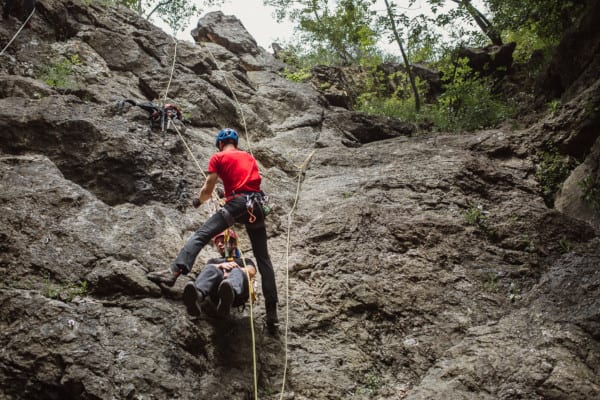
Life safety rope by the numbers
The chief virtue of life safety rope lies in its ability to secure weight, elongate (or stretch) appropriately, and achieve standards for minimum breaking strength. The 2018 edition of NFPA 1858 recommends selecting specific ropes based on utility, rather than employing a “one-size-fits-all” rope—even if an all-purpose choice might be highly rated for safety.
From the 2018 edition of NFPA 1858
5.2.1 Specific performance or specific features shall be selected based upon the intended application of the rope being purchased. If the organization has multiple intended application for life safety rope, the purchase of multiple ropes shall be considered that best fit those applications.
NFPA 1858 (5.2) also delineates what the organization needs to evaluate when selecting life safety rope, noting that the guiding principle for purchase should be based on “[considering] its needs for performance or features in excess of the minimum requirements of NFPA 1983.” The section details the features to be considered when selecting the right life safety rope:
From the 2018 edition of NFPA 1858
5.2.1* Specific performance or specific features shall be selected based upon the intended application of the rope being purchased. If the organization has multiple intended applications for life safety rope, the purchase of multiple ropes shall be considered that best fit those applications.
These considerations include:
- Material
- Construction
- Minimum breaking strength (MBS)
- Elongation
- Diameter
- Weight
- Handling
- Color
- Length
- Heat resistance
- Sheath factors
Material and construction
Rope construction, or the method of assembling the yarn bundles into rope, should be specifically evaluated when considering technical-use rope: kernmantle, double braid, single braid, or laid.
From the 2018 edition of NFPA 1858
5.2.3* Construction, including but not limited to kernmantle, double braid, single braid, or laid, shall be considered in accordance with CI 1202, Terminology for Fiber Rope.
While NFPA 1983 does not require a particular rope-construction type or material, it does specify performance requirements that all certified life safety rope must meet that are detailed in the appropriate sections below. Since different rope assemblies have different properties, some constructions are better than others for fire-rescue operations.
In the past, emergency service personnel were drawn to the easy handling of double braids. But their looser construction has a tendency to snag and abrade on rough surfaces, causing firefighters to phase out their use during ground or remote rescue operations. While some organizations continue to use double braids for other types of rescue operations—and laid ropes are also common—most of today’s life safety ropes feature kernmantle construction.
Nylon rope has advantages in durability and is the most common rope material, and it is the go-to for kernmantle core construction. In addition, nylons are manufactured more efficiently to gain improved breaking capacity and elongation at break.
From the 2018 edition of NFPA 1858
5.2.2* Type of fiber, including but not limited to nylon, polyester, or para-aramid, shall be considered.
The two types of nylons most used are type 6 or type 6.6. These are similar, although the latter has a somewhat higher melting point at 258°C (496°F). Nylon is an excellent material for abrasion resistance when compared with its synthetic cousin, polyester: the former is generally 10% stronger when dry. Even when wet, nylon has double the energy absorption of polyester.
Polyester is widely used for rope-making and has a reasonably high temperature resistance that is similar to nylon type 6.6 plus excellent shock absorption, with a capacity for 12–15% elongation at break (compared with 15 to 28% for nylon). With a higher specific gravity (1.38 vs. 1.14 for nylon), polyester will sink faster in water.
One advantage of polyester—and a reason some prefer it—is its slickness for a faster rappel and better handling. A nylon/polyester blend is superior for safety purposes as it uses nylon with a polyester exterior. The Bulwark Safety X, a high-quality, Canadian-made product, uses a combination of nylon core and polyester sheath for strength and handling. Both inner (16-carrier, braided) and outer (32-carrier, braided) sheaths on the Bulwark use HTP, or High Tenacity Polyester, to combine optimal strength and stretch.
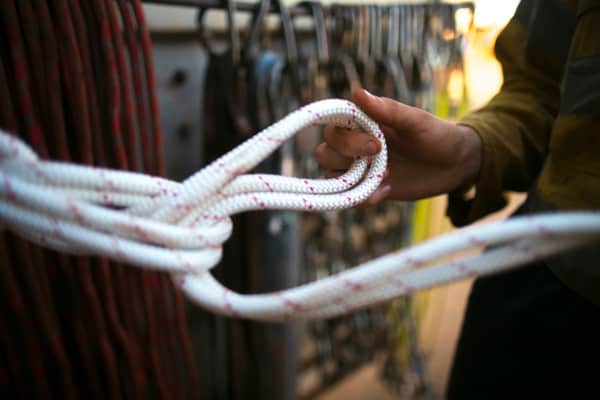
Firefighters do not (or should not) use ropes made from polyolefins, which are popular in the construction industry, because these ropes must be manufactured with larger diameters to create the same strength threshold and, more importantly, their temperature limit is 150°C (302°F), making them a poor choice for rappelling.
A wider diameter creates two potential problems: first, handling thicker rope, especially wearing gloves, reduces manual dexterity and, second, more diameter means more weight to haul, which slows down response time. The low heat resistance threshold in polyolefins is an issue because rappels create heat through friction, and a long rappel or one with added weight can quickly overheat rope.
Polyolefin rope is also a suboptimal choice due to degradation in UV light and a lower resistance to abrasion. The big advantage of this synthetic rope is the price: they are cheap to make. Polyolefin materials are not recommended, however, as firefighter life safety rope.
Minimum breaking strength
Minimum breaking strength (MBS) must be considered based on the specific use and length of rope. Sometimes referred to as tensile strength or ultimate load, it measures the least amount of force by which a rope (or chain or webbing) will fail when under an increasing force through direct application of tension.
From the 2018 edition of NFPA 1858
5.2.5* The required minimum breaking strength (MBS) to provide a sufficient safety factor for the intended application(s) shall be specified to ensure adequate strength.
When selecting rope based on MBS, technical-use rope is tested for its ability to handle tension up to a certain number of pounds, which translates into the ability of the rope to withstand loads that are being pulled.
From the 2017 edition of NPFA 1983
7.1.1 Technical-use life safety rope shall be tested for breaking strength and elongation as specified in section 8.2 and shall have a minimum breaking strength of not less than 20 kN (4496 lbf).
By following the MBS recommendation above, technical-use rope should be selected to meet or exceed the standard, depending on the likelihood of rescue operations involving heavier loads. But keep this in mind: simply deciding to purchase “the strongest rope available” isn’t always the wisest course because, as pointed out previously, strength is directly proportional to rope diameter. As the diameter increases, so does the weight of the rope—which can complicate certain rescue operations.
Understanding the safety factor needed for a rope to lift, suspend, or lower a given mass without fear of breaking while considering force multipliers, knot efficiency, and interaction with other system components can help departments determine the appropriate MBS for their usage.
It’s also important to keep in mind when determining the necessary MBS that factors like edges, knots, age, wear, temperature, and moisture can lower the breaking strength of a rope in use. While some changes, such as untying a knot, can make the rope stronger or weaker, others, such as wear or chemical exposure, can create a permanent loss of strength.
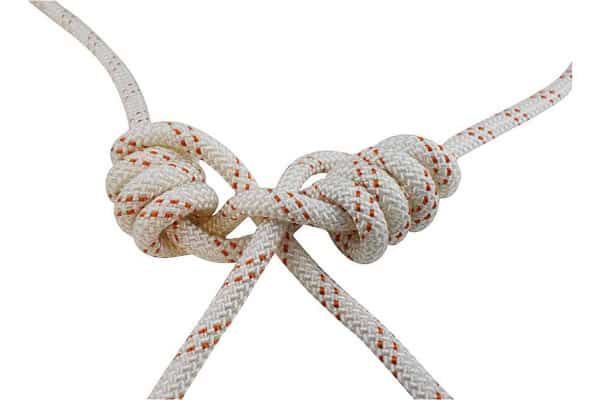
Choosing the right life safety rope is critical when lives are literally on the line
Given the stakes, choosing the right life safety rope for firefighting operations is about more than personal preference. Understanding NFPA requirements and the characteristics that should impact selection helps ensure that the rope firefighters use possesses the right qualities to keep them and the people they rescue safe.
Stay tuned for the next installment in our series on selecting life safety rope, where we help firefighters dig into the other important characteristics that impact rope selection.
View our selection of rope, including the technical-use life safety rope, Bulwark Safety X, and the glow-in-the-dark Night Saver, which illuminates the path to safety in marine rescues, firefighting, and other applications.
If you have any questions or need help finding an item, contact us at +1 (888) 361-6662 or support@qrfs.com.
This blog was originally posted at blog.qrfs.com. If this article helped you, check us out at Facebook.com/QuickResponseFireSupply or on Twitter @QuickResponseFS.


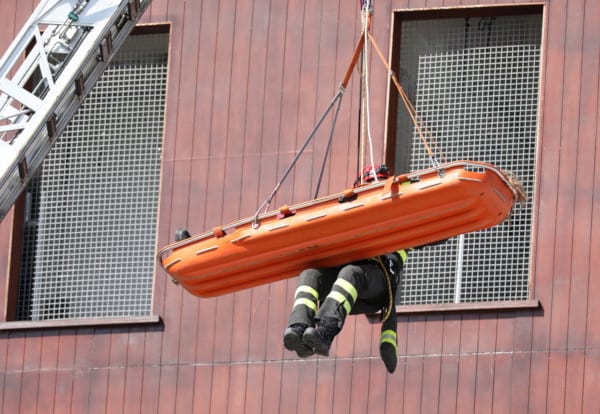
The question I have is, could you answer the question, does a Life Safety Rope (LSR) require a Tracer Ribbon? I would like to find a document stating the requirement for LSR identification.
Donald — For specific standards and code questions like yours, you can try our Ask a Fire Pro service. Click the link to submit your question with some information about your building, and a fire protection professional will provide an answer based on best practices, standards, and codes. Our pros include AHJs, contractors, engineers, and code experts with 150+ years of combined experience!